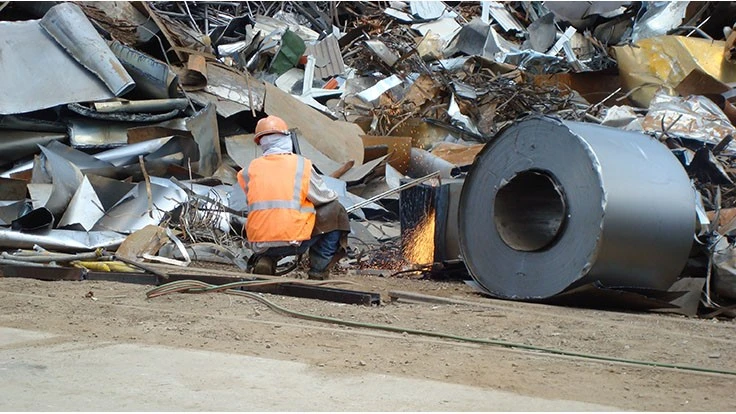
The ferrous scrap and steel markets in the United States, which have enjoyed strong pricing and demand in the post-COVID-19 restrictions rebounding economy, seem to be heading into the summer with reduced momentum.
Domestic mill scrap buying statistics maintained by the Raw Material Data Aggregation Service (RMDAS) of Pittsburgh-based MSA Inc. and released June 20 confirm what other pricing services reported earlier in June: Ferrous scrap dropped in value by some $45 to $60 per ton in the past 30 days.
According to RMDAS, price drops in the July 20 to June 19 period included a $78 per ton loss in value for prompt scrap in the South as the worst drop and a $34 per ton loss for shredded scrap in its North Midwest region as the smallest price reduction.
From March to May, prompt scrap had been purchased at more than $700 per ton in the U.S., but the average per ton price fell to $650 in June.
Shredded scrap, meanwhile, temporarily peaked at $604 per ton as an April average, but by June 20 was down to $481 per ton in value.
No. 1 Heavy melting steel (HMS), meanwhile, fell below $400 per ton for the first time this year, averaging $395 in June, per RMDAS.
Tepid demand from overseas has been assigned some of the blame for the downward drift in HMS in particular, but domestic mill demand for all grades also has hit some speed bumps.
According to the Washington-based American Iron & Steel Institute (AISI), domestic raw steel production in the week ending June 18 was 1.758 million tons. That is down 1.5 percent from the previous week (ending June 11) when production was 1.784 million tons.
Comparing this June with June of last year also is unencouraging. The most recent week’s production represents a 4.7 percent decrease from 1.84 million tons produced the week ending June 18, 2021.
According to AISI, mills in the U.S. are operating at an 80.5 percent capability utilization (capacity) rate now, while they were running at an 83 percent rate one year ago.
Year-to-date production through June 18 sits at some 42.4 million tons made at an average capacity rate of 80.7 percent. The output figure is down 1.8 percent from the 43.2 million tons made during the same period last year, when the capacity rate averaged 79.4 percent.
Latest from Recycling Today
- Aqua Metals secures $1.5M loan, reports operational strides
- AF&PA urges veto of NY bill
- Aluminum Association includes recycling among 2025 policy priorities
- AISI applauds waterways spending bill
- Lux Research questions hydrogen’s transportation role
- Sonoco selling thermoformed, flexible packaging business to Toppan for $1.8B
- ReMA offers Superfund informational reports
- Hyster-Yale commits to US production





